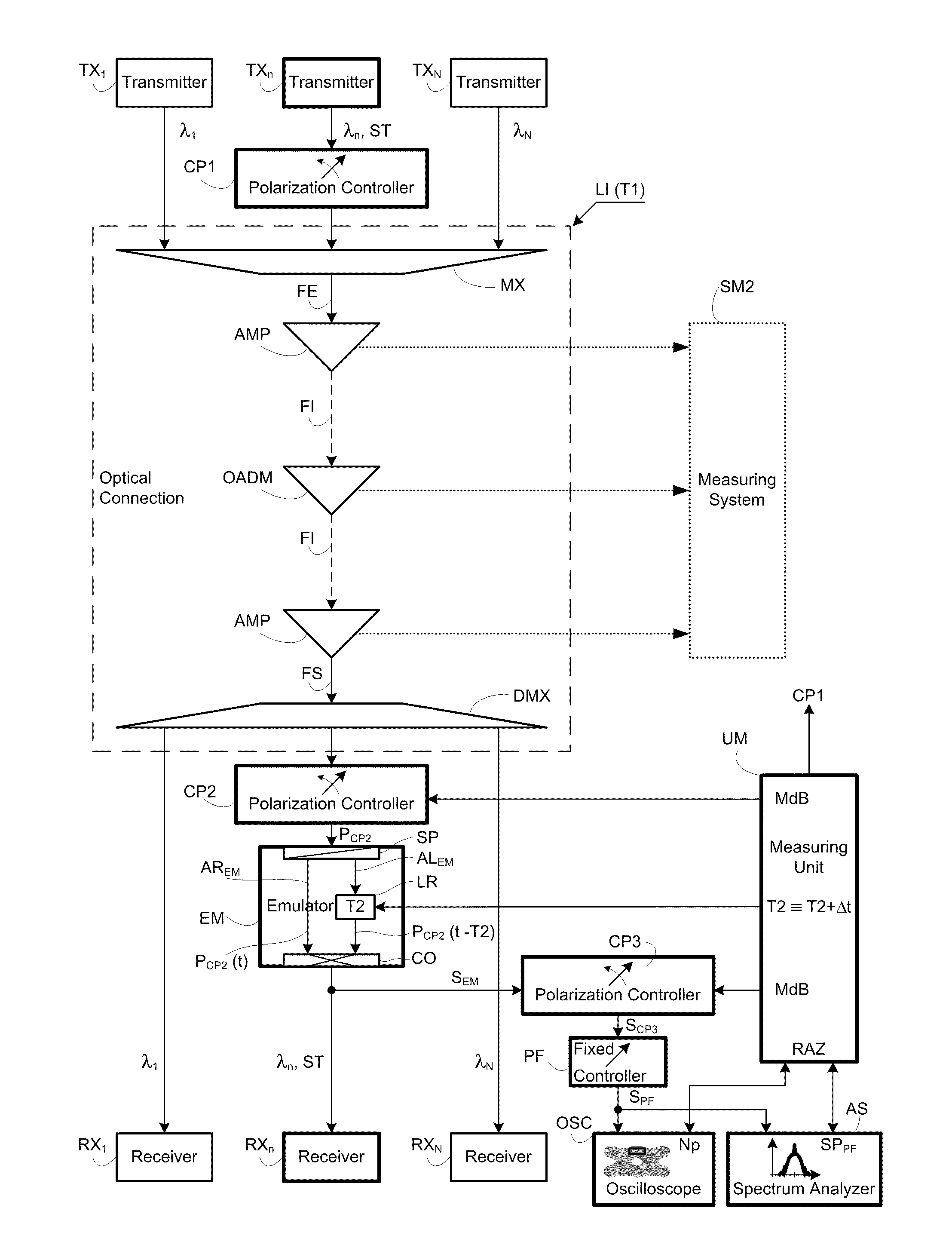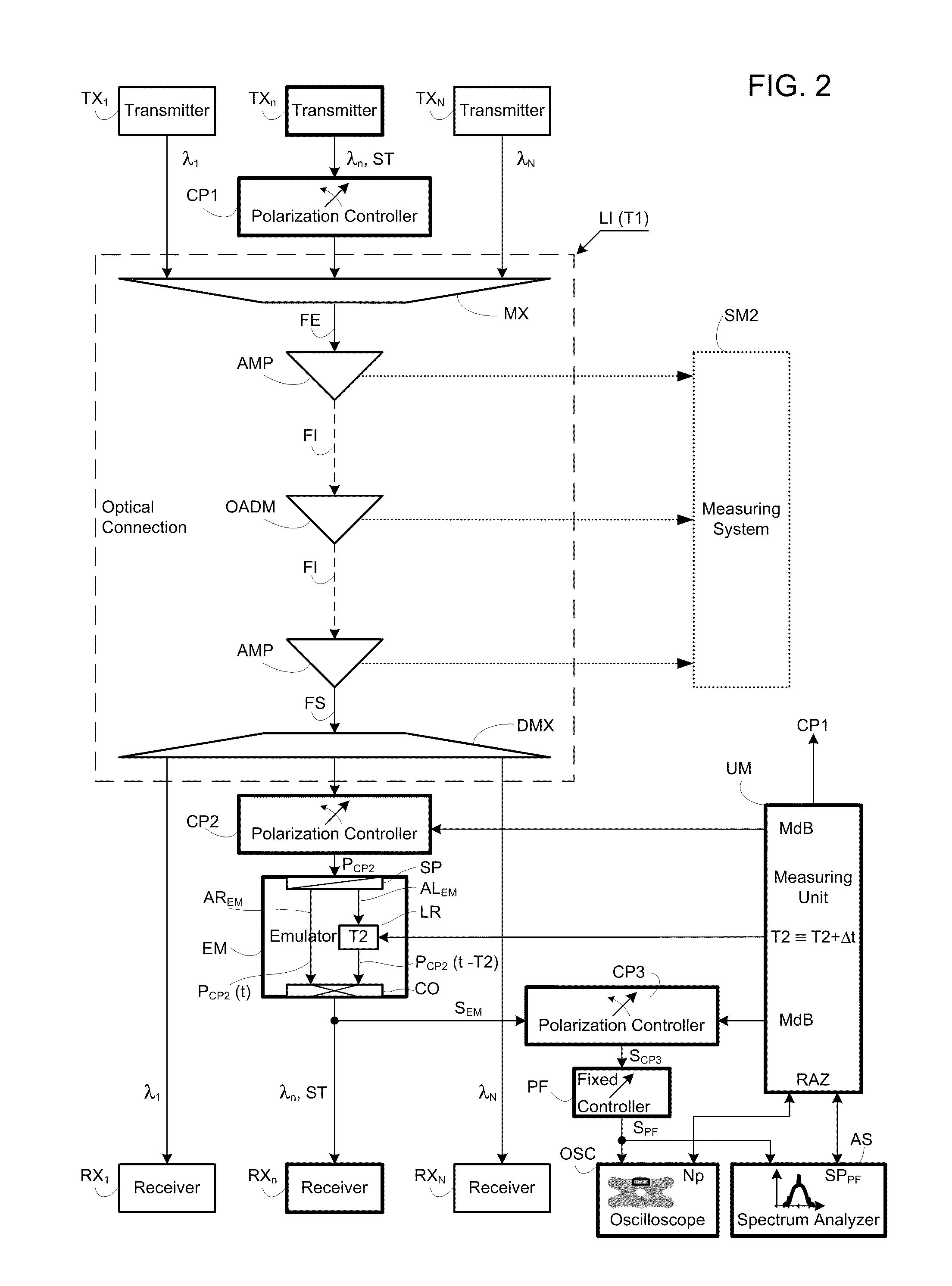Measuring differential group delay in an optical fiber connection
- Summary
- Abstract
- Description
- Claims
- Application Information
AI Technical Summary
Benefits of technology
Problems solved by technology
Method used
Image
Examples
Embodiment Construction
[0066]Referring to FIG. 2, the measuring system is used for measuring a differential group delay T1 in an optical fiber connection LI of wavelength division multiplexing type WDM and transmitting several optical signals respectively from transmitters TX1 to TXN, also called as transponders, to respective receivers RX1 to RXN. Signals with different wavelengths outgoing from the transmitters have undergone a phase shift keying modulation BPSK or DPSK with two phase states. The modulated signals are injected into the connection LI by input ports of a multiplexer MX to be multiplexed therein.
[0067]The connection LI is for instance composed of a first optical fiber FE transmitting the multiplexed modulated signals, then intermediate optical fibers FI and a last optical fiber FS linked to the input port of a demultiplexer DMX. The optical fibers FE, FI and FS are interconnected by optical amplifiers AMP and one or more channel insertion and extraction components OADM marking out the conn...
PUM
 Login to View More
Login to View More Abstract
Description
Claims
Application Information
 Login to View More
Login to View More - R&D
- Intellectual Property
- Life Sciences
- Materials
- Tech Scout
- Unparalleled Data Quality
- Higher Quality Content
- 60% Fewer Hallucinations
Browse by: Latest US Patents, China's latest patents, Technical Efficacy Thesaurus, Application Domain, Technology Topic, Popular Technical Reports.
© 2025 PatSnap. All rights reserved.Legal|Privacy policy|Modern Slavery Act Transparency Statement|Sitemap|About US| Contact US: help@patsnap.com



